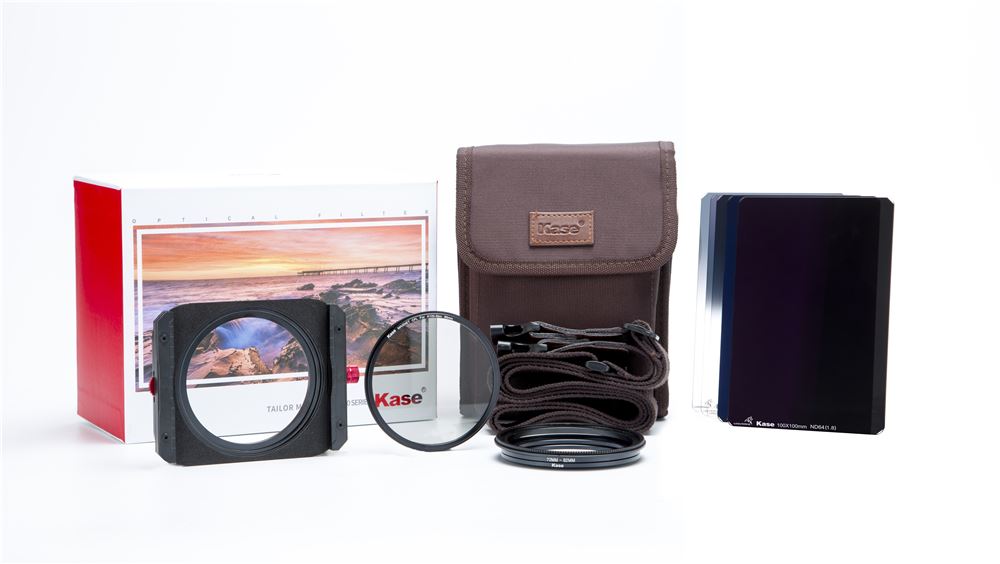My switch to Kase Filters
12 Feb 2020
Kase Wolverine K9 Series
I’m not much of a gear junkie when it comes to photography. I like all the kit in my bag to be used, to work and to be as good as it can be I don’t like to leave kit at home, I carry everything, every shoot. The law of the sod will strike me down if I leave something behind. I can guarantee I will always need the thing on my desk!
I still shoot on my Canon EOS5Ds which I bought in 2016. The images are pin sharp when paired up with the L-Series lenses I have and despite there being more modern sensors from Canon and the others, my camera still delivers fantastic results. I will often use every lens in the bag when I go out and seldom wish I had something different. All in all, my kit does everything it needs to and more importantly I know where every button is, where each item lives in my bag and have a pretty seamless and instinctive workflow when I am out shooting.
Making a change is actually a pretty big deal.
It has to be right. It has to make either the photographs, or the making of the photographs significantly better or deliver something new to the mix.
My filters have been a key part of my kit for a long time. They take a lot of abuse, being used heavily, regularly and often in challenging conditions. From Saharan sand to Arctic snow and the frequent dousing of sea spray on the Jurassic Coast at home, it is fair to say the filters take the brunt of the elements.
A few months ago I borrowed a set of filters from Kase. I first saw them a few years ago at The Photography Show and have been keeping a keen eye on the evolution of their glass filters ever since. I decided it was time I tried them for myself.
I was loaned a set of the Wolverine 100mm series filters, holder and circular polariser.
The first thing that struck me was the polariser being fitted behind the holder, close to the lens, with the grads or Nd’s at the front. After having a polariser up front for so.many years, I must say initially I thought this would be quite cumbersome. I always found cleaning a glass polariser in-the-field far easier than cleaning the resin grads.
However I soon realised it was a stroke of genius.
The Kase filters are glass. Better still, they are toughened glass. Better yet, they are hydrophobic too. Way easier to clean than the polariser and infinitely easier than the resin filters. The water actually beads and wipes off in a single wipe. Very quick and very easy.
Quite simply, this alone, is the difference between getting a shot and missing it.
I can’t even begin to think of the number of times I have spent faffing around cleaning filters at the coast, only to have to do it again within moments. Smears have been a constant battle. I’ve experimented with kitchen roll, microfibre cloths, lens cloths, cleaning fluids, pre-moistened lens wipes. You name it, I’ve tried them. There is nothing more frustrating than having a cracking sunrise and smeary set of images. All too frequently you find as much time is spent cleaning as shooting.
Don’t get me wrong, I have been a dedicated Lee filter user for 15 years or more and always found the neutrality to be good. Buying my first set of grads really set me on the right path and was a massive shift in my achievements.The big stopper was a massive success and contributed to landscape photography becoming such a popular genre. I still favour using grads to blending images wherever possible. Capturing a balanced scene in camera both makes post production quicker and easier, but makes the process of seeing the images on the cameras lcd a more enjoyable experience.
Initially I carried both sets of filter, the Lee and the Kase and both holders, so I had the full arsenal of grads and went from one holder to the other, but was quite suprised to find I actually preferred the kase one.
Aside from the hydrophobic coating and tough scratch-resistant filters, I discovered that they were every bit as neutral as the Lee ones and actually they seem quite a bit sharper, particularly at the long end of my 100-400mm which I often use with a 1.4x converter too. I have experienced quite significant issues with the resin filters on this combo in the past. The resin ones can become slightly bowed if they are not kept completley flat and inevitably things can get cruched in bags from time to time.
I took both sets on my recent Norway trip and when I was going through the images on my return, realised I hadn't used a single Lee filter for the entire trip. I was more confident that my images would be better with the kase ones.

Incidentally, the Wolverine K9 holder has a wheel on the side that rotates the polariser. I found much easier to adjust, than my old Lee system, especially with gloves on.
I am very excited to be a Kase Pro Partner and really looking forward to putting the new filters through their paces. Thanks to the team at kase HQ for all their help and support.
Disclaimer. To avoid any ambiguity, I am now a Kase Pro Partner and Affilliate. Although I am supported by Kase, I have switched beause it was the right product for my photography, as detailed above.
Please note I now use The Kase Armour system which was launched after this article was published.